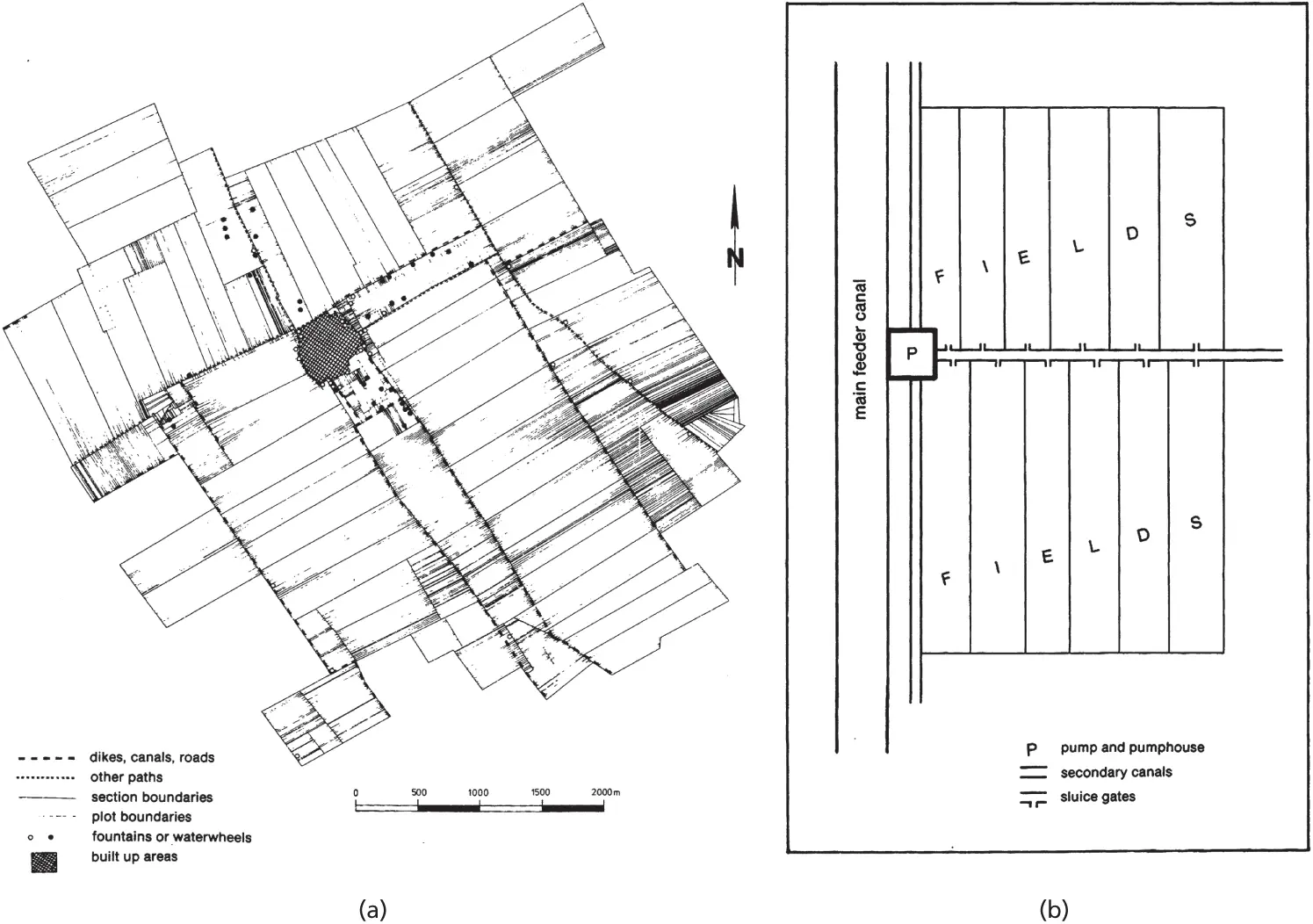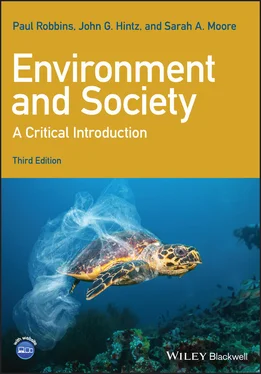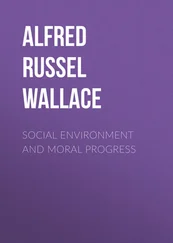Sanctions must be imposed on violators, but these should be graduated, meaning that the system should encourage voluntary compliance with rules, have low punishments for first offenders, and only turn to coercion as a last resort. For our fishery, this means that fishers should expect to monitor one another and comply with rules voluntarily. Should a fisher be found in violation of a limit on the amount of fish they take or some other provision (through the monitoring system established above), they can be encouraged to return to compliance without undue or disproportionate duress or expulsion.
Social mechanisms must be developed to resolve conflicts between users. There are many possibilities for mutual complaints in a common property system, and in the case of our fishery, a robust management system would allow a low-cost way to work out mutual grievances without turning toward expensive litigation or calling in higher-order authorities. These mechanisms might be a small council of respected citizens, a mediation system using an outside third party, or any number of other socially appropriate systems.
For a common property management system to work, it is essential that it is allowed at least some measure of autonomy from higher or non-local authorities. Imagine dedicating several years of careful work in developing a community management system of fishers, only to have a government official from a distant municipality arrive, review the rules, and begin meddling with their specifics. Where this can be expected to happen, it is unlikely fishers would take the time and effort to craft such a system in the first place.
Given the apparent complexity of making common property systems work, it would seem they would be very rare indeed! Nothing could be further from the truth. The world is brimming with “commons,” once a neo-institutional eye is brought to bear on the question. Indeed, it is a sad commentary on our prevailing collective wisdom that cooperation is treated as an oddity or an exception, when indeed it is quite often the rule.
Ingenious Flowing Commons: Irrigation
Most of the world’s crops, including almost all of the vegetables and many of the grains you probably consume, come from irrigated fields. Getting water to food plants might be the oldest problem in civilization. Indeed, the difficulties in maintaining and managing irrigation have occupied environmental managers for thousands of years. One of the greatest challenges in managing irrigation is that, typically, many water users are connected through the same complex system of ditches and walls, through which water flows from the highest point (the system “head”) to its lowest fields (its “tail”). Fields may be held privately, but the irrigation water must be managed collectively. Such systems are labyrinths of sluices, canals, and gates, requiring that each user follows a careful set of rules that allow them their share of the water for a time, but also maintenance of the supply so other users, especially downstream, get their fair share as well (Figure 4.2). The opportunities for system failure are obvious. If one person at the head of the system fails to open or close a gate after they use their supply of water, the downstream user will receive none. If all parties do not work together to flush the system as a whole, the water can become salty, leading to the loss of the crops of all farmers. These difficulties notwithstanding, the world is filled with local irrigation systems where multiple users cooperate in the actions, make decisions together, monitor the infrastructure, and achieve equitable outcomes with little waste or loss of precious water.

Figure 4.2 Irrigation systems are labyrinths of sluices, canals, and gates, which test the limits of people’s ability to cooperate in managing environmental goods. This example, from the village of Musha in the Nile Valley, shows the interrelationships of one private field to the next, tied together by the mutual need for water held communally. Source : Reproduced from Turner, B.L.,II and S.B. Brush (eds.) (1987). Comparative Farming Systems . New York: Guildford Press.
Wildlife Commons: Collective Management through Hunting
Even the world’s wildlife can be considered a kind of commons. In the United States, where herds of elk and other important species were in serious decline a century ago, management has worked to develop common property solutions to problems of over-hunting. Historically, since such animals were wide-ranging and the property of no single land owner, they could be hunted with impunity, leading to population declines in the late 1800s. Current systems of management in states like Montana utilize many of the principles of common property design. Limits are placed by the government on the number of hunters and the number of hunting licenses in any given year based on extensive monitoring of game populations. Preferences for licenses are given to residents of the state. While the overall limits are set by officials, all the rules are overseen through a collective review process that includes Montana hunters themselves. The result is a system where a potential “open access” resource (free-ranging elk) is made into “common property” by 1) excluding some potential outside users, 2) establishing rules and limits, and 3) reviewing and overseeing these rules through consultation with resource users themselves. Versions of this system are in place across the United States.
The Biggest Commons: Global Climate
But not all commons are local, like irrigation, or regional, like elk herds. This brings us full circle to the problem of governing the climate. The global climate has all the qualities of a common property system headed for failure: exclusion is difficult and costs to defer depletion of the collective good can be high to individuals, firms, or states. By treating the global climate as common property, it is possible to think about it in a new way, however. As a commons, we can imagine climate as a shared good, and that people polluting it might constrain their behavior through some kind of collective agreement.
Clearly the possibilities for collective action exist, and many new systems to manage the problem have emerged in the last decade, including the Kyoto Protocol (see Chapter 11). That agreement essentially imposes a mutual set of restrictions that countries must follow on their emissions, with mechanisms for crafting rules and making decisions even in the absence of any kind of higher authority; there is no real “world government” to enforce global agreements, after all.
The problems facing the common property of a fishery are largely similar to global climate, of course. It is hard to monitor who is doing what. Sanctions are difficult to impose on free-riders who do not comply with the rules or on users of the resource (polluters) who are not part of the agreement (e.g. the United States). The presence of collective choice systems for setting and revising the rules is also unclear, beyond the fact that signatories participate in negotiation rounds to work out provisions. For these reasons, an institutional analysis of the climate problem sheds light on the prospects for success in controlling climate change by identifying areas where creativity will be necessary to solve it as a common property problem.
Are All Commoners Equal? Does Scale Matter?
Читать дальше












